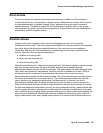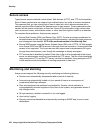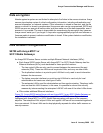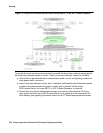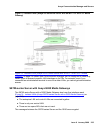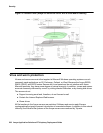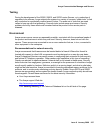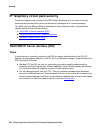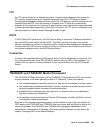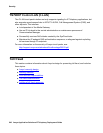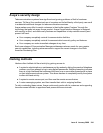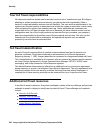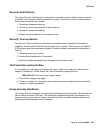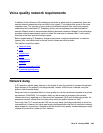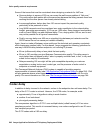
IP Telephony circuit pack security
Issue 6 January 2008 239
FTP
An FTP service exists, but is disabled by default. Communication Manager must enable the
FTP service, and only does so for firmware downloads. Once the FTP service is started,
Communication Manager initiates the client-side of the FTP protocol, and then transfers a new
firmware file to the IPSI. Once the transfer is complete, the FTP service is automatically
disabled. A 5-minute time-out is enforced to guard against cases where the firmware download
is started but terminated prematurely. When time-out occurs, the FTP service is disabled until a
new command from Communication Manager enables it again.
DHCP
In S8700 fiber-PNC systems only, the IPSI has the ability to receive its IP address information
from the S8700-series Server through DHCP. This DHCP service only runs on the control
network, and does not connect to a customer's LAN. Avaya has also implemented mechanisms
for restricting this DHCP service, so that non-IPSIs do not receive an IP address and IPSIs do
not receive an address from a non-S8700-series Server.
Control link
In order to communicate with the S8700-series Server, the IPSI establishes a control link. This
link is encrypted through Triple-DES (3DES) by default, although AES is also available. The
control link is not open for communication to or from any other entity than the S8700-series
Server.
TN2302AP and TN2602AP Media Processors
The TN2302AP IP Media Processor and the TN2602AP IP Media Resource 320 circuit packs
are the interfaces to the audio gateway portion of IP Telephony. These circuit packs:
● Use isolated/proprietary operating systems, so they are not susceptible to known viruses.
● Run independently of administrator traffic in order to maintain an isolated security domain,
protecting against attacks that exploit trusted relationships.
● Establish audio connections and only respond to a connection when a corresponding
signaling connection is established.
● Successfully survive some Denial of Service (DoS) attacks, including SynFlood, and are
very resilient to flood-based attacks.
Because of the proprietary operating systems, limited number of open ports, and reliance on
UDP sessions, the TN2302AP and TN2602AP are very secure, and are difficult to take out of
service. Regardless, the TN2302AP and TN2602AP are completely independent of the
administration, maintenance, or reliability of the Avaya Media Gateways, so they cannot be
used as “jumping points” to the Media Gateways.



